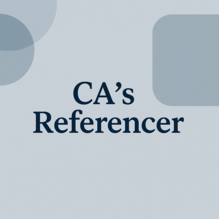Buying your first art? Fine print in tax laws could add to your costs
New Delhi, Nov 20, 2025
Unexpected expenses and legal requirements may include GST, capital gains tax on resale, and strict paperwork rules
People buying their first piece of art feel a sense of aesthetic accomplishment but they should know that such purchases must comply with tax and regulatory rules, financial experts said.
“Off-the-shelf sale of a painting or artwork is treated as a sale of goods and attracts 5 per cent Goods and Services Tax (GST),” said Mandar Telang, a chartered accountant and secretary of Bombay Chartered Accountants’ Society (BCAS). If an artist is commissioned to create a work and the contract transfers copyright or is treated as a service, the GST rate can jump to 18 per cent.
For purchases through galleries or dealers, buyers must show proof of the source of funds for taxation. GST paid for such transactions cannot be claimed back unless the artwork is bought for business use, said Gaurav Jain, partner, direct tax at Forvis Mazars India,
The cost of buying an artwork may include GST, insurance, logistics, auction house charges and restoration expenses.
Capital gains apply when you sell
Under tax laws, artwork is treated as a capital asset, meaning profits from a sale are taxable.
“If artwork is sold within twenty-four months, the gains are short-term and taxed at the individual’s slab rate,” said Kinjal Bhuta, chartered accountant and advocate, treasurer, BCAS. “A sale after twenty-four months qualifies as long-term and is taxed at 12.5 per cent.”
A painting bought for Rs 5.2 lakh and sold after 30 months for Rs 9 lakh will result in a taxable long-term gain of Rs 3.8 lakh, she said.
Shefali Mundra, chartered accountant and tax expert at ClearTax, said that records, such as purchase invoices, payment proof and sale documents, are essential because the tax department may ask for evidence of valuation.
Gifts, inheritance and paperwork you must preserve
An artwork received as a gift from a non-relative is taxable if its fair market value exceeds Rs 50,000, Jain said. Gifts from relatives, on marriage, or under a will are exempt. In inherited pieces, tax is paid only on sale, using the previous owner’s cost and holding period.
Experts emphasised maintaining:
Invoices and payment proof
Certificates of authenticity
Provenance papers
Insurance documents
Gift deeds or will copies
Such records help defend valuations and ownership during assessments.
Compliance risks new collectors should watch
High-value cash transactions are a red flag. “Cash payments above Rs 2 lakh are prohibited and attract an equal penalty,” Jain said. Valuation mismatches, inconsistent paperwork, or unexplained sources of funds can also trigger scrutiny.
Mundra noted that subjective pricing in the art market often leads to questions, making clear documentation the safest shield.
For first-time buyers, the takeaway is simple: enjoy the art, but maintain the paperwork as carefully as you would for any investment.
[The Business Standard]


